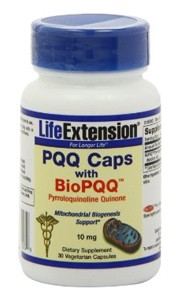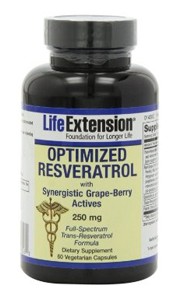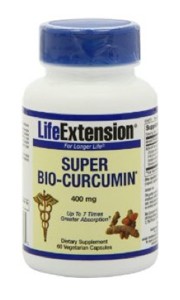Readers Summary
- What is the retrograde response?
- What is organ failure?
- Do genes really mater?
- How do we limit leakiness?
Okay, now that we established that mitochondria leakiness determines our lifespan, what can we say about disease generation? Does leakiness determine disease progression? Well, it appears it does. We know that lower life forms like yeast accumulate mitochondrial mutations one hundred thousand times more frequently than in their nuclear DNA. Most of those occur in the control region of the mitochondrial DNA (mtDNA). The new theory of mitochondrial aging is that leakiness of free radicals at the first cytochrome also helps weed out those mitochondrial mutations as we age. Why? Mitochondria that are sluggish to the signal to divide because of the mutation would be taken out by apoptosis very quickly. Moreover, if the mitochondria were in perfect order, it would divide immediately and through clonal expansion lay waste to its inefficient brethren. This is intracellular natural selection at work. So the more mutations in the mtDNA coding region the more leakiness occurs. That leakiness is the signal to the nuclear DNA to make new mitochondria. This pathway is called the retrograde response. This is how a defective mitochondria signals the nucleus that something is amiss. In theories past, we always believed it was the nuclear DNA that set the tempo for such decisions but now we know that power rests with the mitochondria. This retrograde pathway is found in yeast all the way up to humans phylogenetically.
Retrograde signaling forces the cell to anaerobic respiration until the new mitochondria are ready to make ATP. The longer this signal persists, the stronger the signal to make new mitochondria. So in essence this pathway sensitizes the cell to cellular stress and aides in survival. We know this mechanism is important in the human heart and brain. We also think that this retrograde pathway is vital in the increased survival seen in the calorie restriction diet. Moreover, over a lifetime a paleolithic diet provides high density nutrients and a smaller caloric density making it the best diet to sustain a healthy longevity in my view based upon what we now know.
If an organ has mostly defective mitochondria, the organ’s function will be suboptimal, but the organ can amplify the least damaged mitochondria for years. This is common in kidney failure and heart failure. Mitochondria usually last about 3 weeks. The choice for mitochondria in life is limited; divide or die. In this fashion, defective power plants are constantly weeded out. Let me give you an example. Take a brain neuron. They usually are as old as we are and are rarely replaced. Their function does not crash if there is a power plant mutation. Instead, its function is diminished to a very small degree over time. The more defective mtDNA is, the more oxidation will be found in the cell. Ironically, this oxidation does not effect proteins, fats, or carbohydrates from the diet, in the cell as we once thought. Studies have been done in damaged organs and cannot find evidence for oxidative damage. What is effected is the generation of transcription factors and genes by the new cellular redox state. This redox state is the warning system for the cell of possible impending doom over time. Nuclear regulatory factors 1 and 2 get activated (NRF 1 and 2). NRF1 is what signals the nucleus to manufacture of new mitochondria and NRF2 shuts it off. This signaling system accounts for the chronic inflammation that underscores aging and disease propagation in humans. The level of oxidation chronically resets itself depending upon the current cellular terroir. We know in humans that this state can exists for decades. I follow this trend with a highly sensitive CRP test. We may notice we have less energy, take longer to recover from exercise, but it generally won’t kill us. With this explanation it should be clear that the trade off for removing bad mitochondria is long term organ failure slowly over time. We call this aging. (Endurance athletes beware)
Most research today is gene centric. It would appear that defected genes cause all of our diseases and maladies. A study, in 2004 in Nature Genetics by Alan Wright, has shown that belief may be false. He showed that if you could extend lifespan you could postpone all the disease of aging with an ingenious experiment. He asked a simple question. What happens to different animals with different lifespans when you knock out the same nuclear DNA gene? He looked at Huntington’s, Parkinson’s, and Alzheimer’s disease in this experiment among seven others. They found a tight correlation between disease progression and the leakiness of the mitochondria. It was irrespective of the nuclear gene deletion! It is now clear to us that our old beliefs about nuclear DNA dominance is no longer applicable. It appears that disease onset is married to the cellular physiology of longevity. In all degenerative diseases it appears cells are lost by apoptosis and mitochondrial leakiness is what determines this cellular fate. This was a correlative study and not a causative one but the link was very tight. Later in 2004 another study appeared in Nature from the Karolinska Institute that suggests strong causation.
In obesity, we see increased leakiness. When leptin is working well we can uncouple respiration with UCP3 and decrease leakiness. Aspirin is a mild uncoupler as well, and in my view this is the main reason one should use it instead of all the reasons stated in journals today. In calorie restriction, we have decreased leakiness as well due to low electron flow in the chains and this increases survival in mammals. Some polyphenols like resveratrol and curcumin also decrease leakiness as one of their many beneficial effects. Another strategy for healthy longevity would be to increase our density of mitochondria so we had more capacity. This is precisely what birds and bats do. Can humans do this? We don’t know yet but some of the research being done on pyrroloquinoline quinone (PQQ) since 2003 aims to answer this question. Personally, I take 20 mgs of PQQ per day. I also use 500 mgs of trans resveratrol and a 1 gram tablet of curcumin daily. I want my mitochondria optimized. The work done by Elizabeth Blackburn at UCSF won her the Nobel Prize for medicine in 2009. She found telomeres and mitochondrial signaling are married together biologically for action.
More Support: Webinars by Dr. Kruse
- Mitochondria Energy Rx (January 2013)
Your Shopping List for this Post
 |
 |
 |
| Life Extension PQQ Caps with BioPQQ |
Life Extension Optimized Resveratrol |
Life Extension Super Bio-curcumin |
Additional Resources
Cites
- Ann Neurol. 1993 Oct;34(4):609-16
- Wright, A et al. Lifespan and mitochondrial control of neurodegeneration. Nature Genetics 36:1153-56;2004
- Trifunovic, A et al. Premature aging in mice expressing defective mitochondrial polymerase. Nature 429: 417-23; 2004
- www.biochemistry.ucsf.edu/labs/blackburn/


